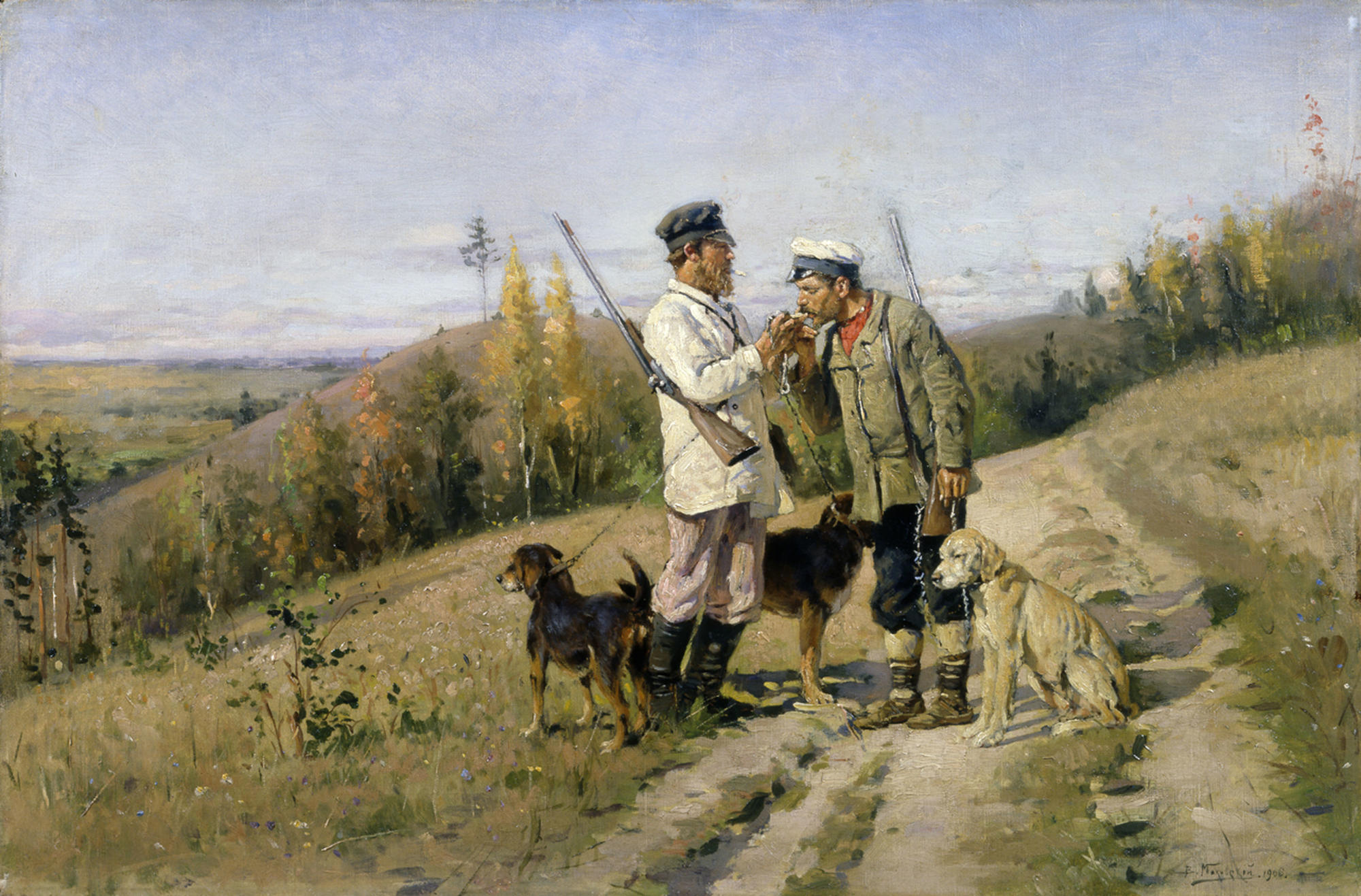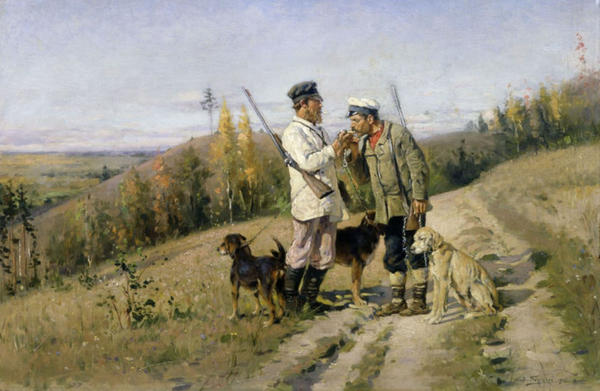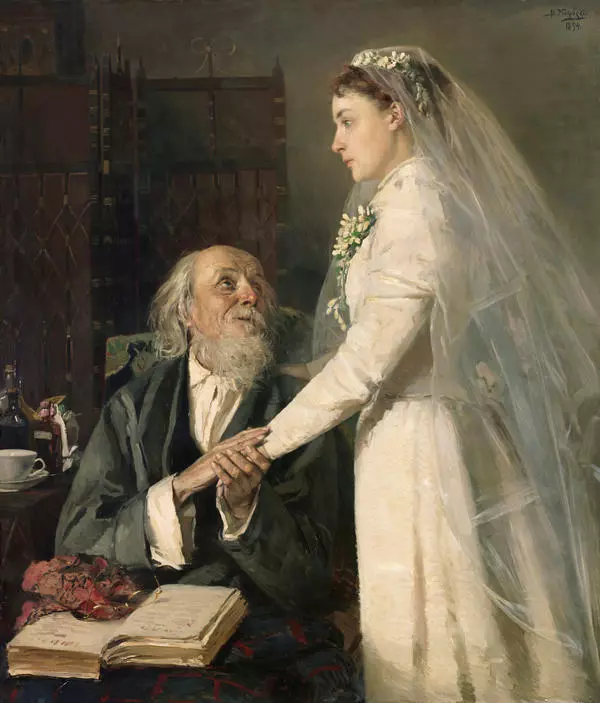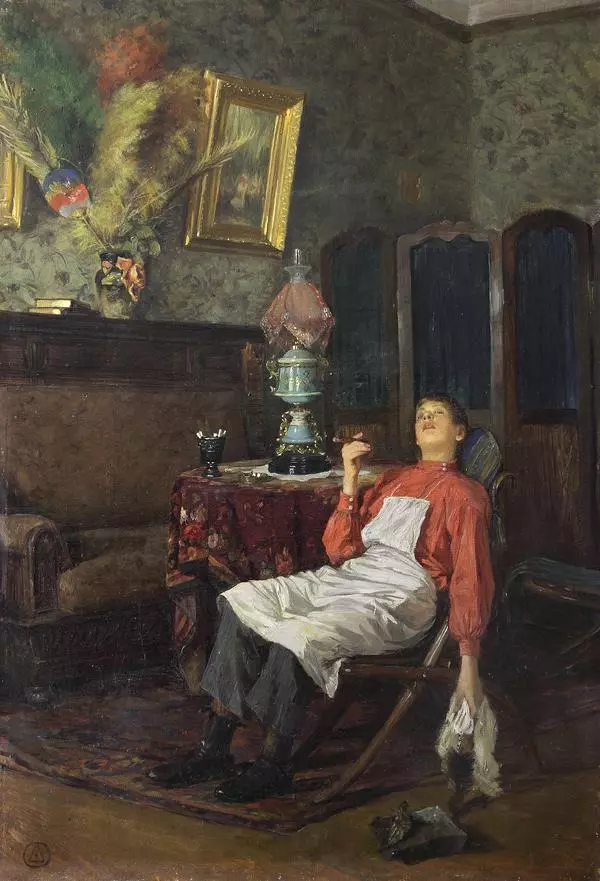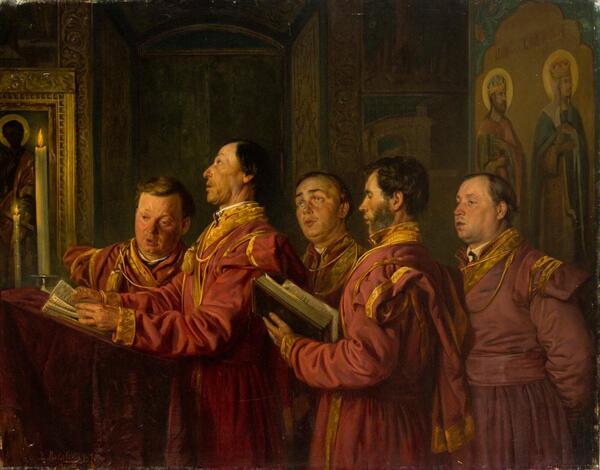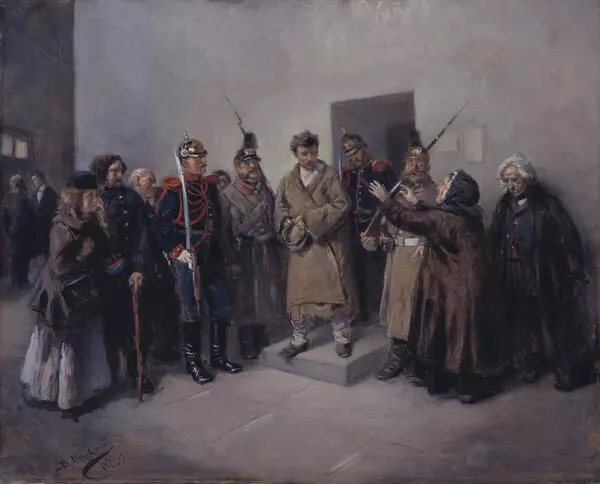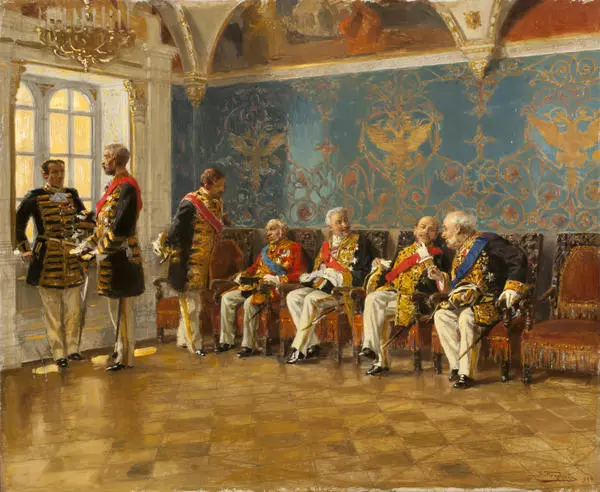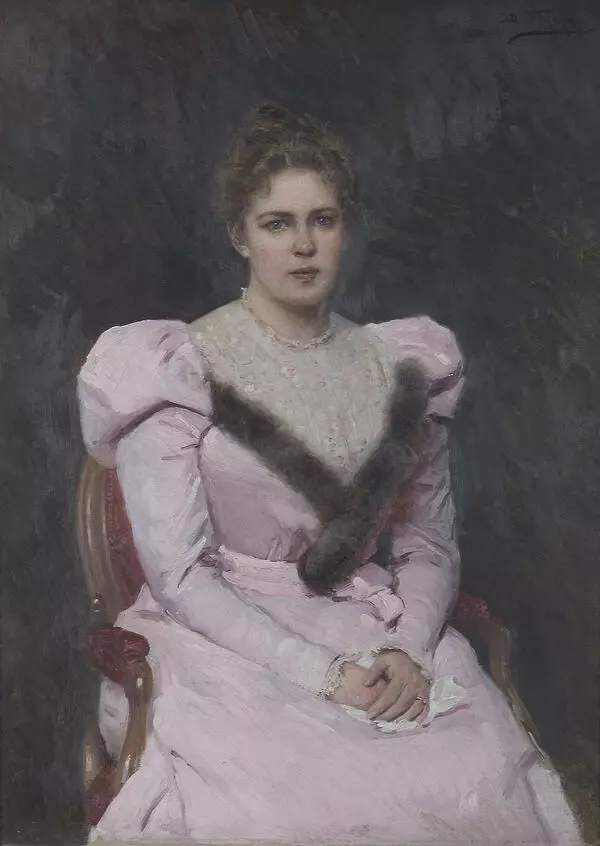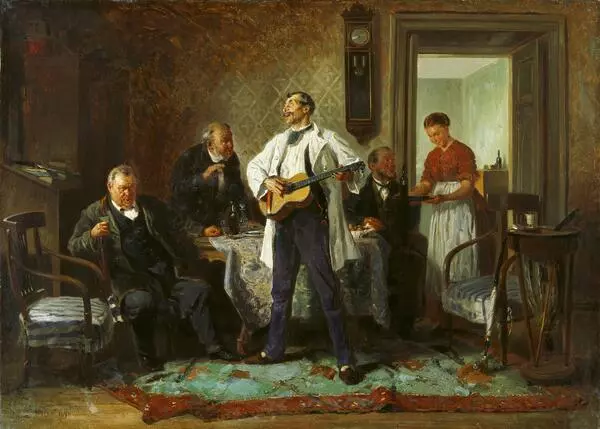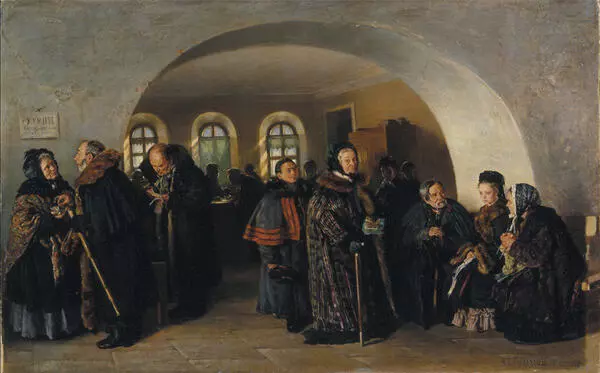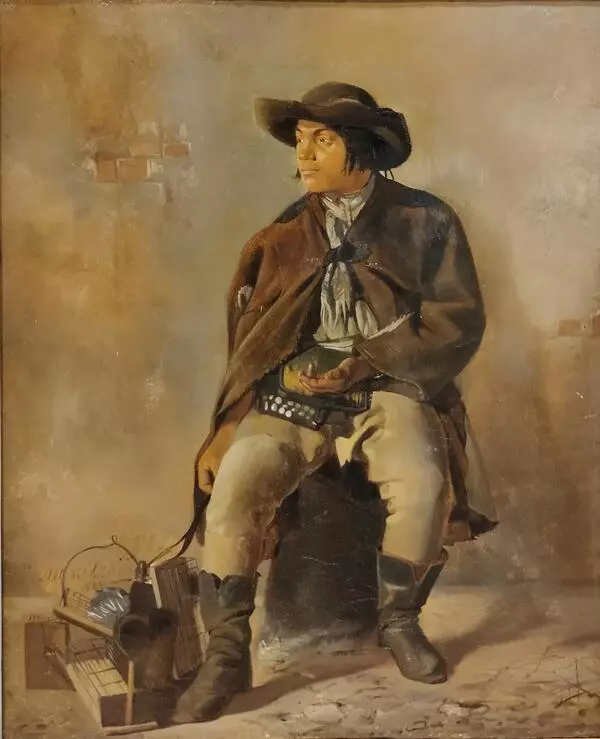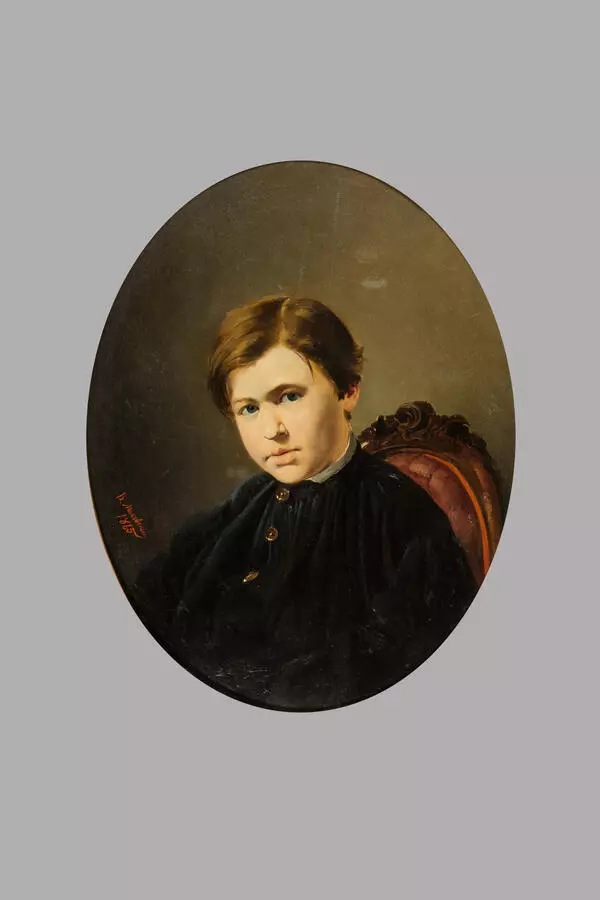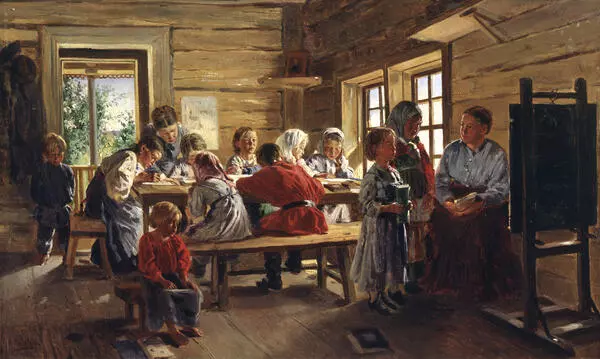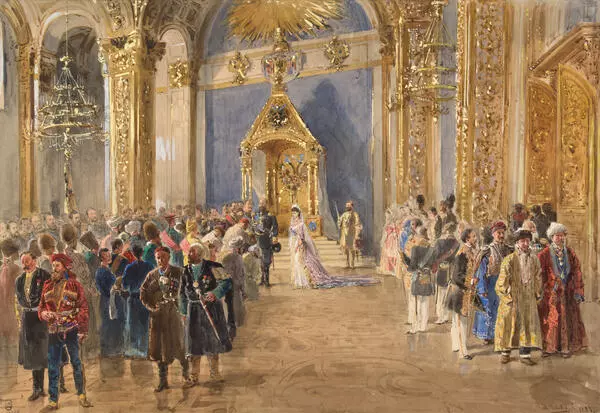Artist Vladimir Makovsky was a member of the Association for Itinerant Art Exhibitions. The artists belonging to the association were called the Itinerants; they organized exhibitions of their paintings in Russian cities and towns. In provincial areas, they familiarized local viewers with contemporary Russian art and sold their paintings. In their work, they sought to show life as it was, raised acute social issues and denounced vices.
Vladimir Makovsky’s paintings were part of almost every exhibition organized by the Itinerants. A recognized master of genre painting, he was brilliant at telling stories through his art. The artist depicted scenes from life reveling everyday problems. The artist did not seek to raise pressing issues; he showed everyday life simple as it was. In his paintings, Makovsky pictured townspeople and villagers, their worries and simple joys, comic and lyrical situations. He painted merchants and public officials, petty bourgeois and common men, artisans and peasants, village children. General public understood his paintings very well and could relate to them.
The characters and subjects in Makovsky’s paintings featuring hunting scenes are congenial to those in hunting short stories written by Ivan Turgenev. The artist was already an established master with his own style, when he created his painting Hunters. Just like other works by the mature artist, the painting is distinguished by the psychological approach and sharpness, with which the master observed life. The artist sees the most important features of his characters’ personalities in ordinary everyday situations.
It is not a classic hunting painting, but a piece of genre art offering a treatment of the hunting theme. The artist portrayed a minor episode, where two hunters met on their way to the forest and one of them asked the other one for a light. The images of the two men are built on contrast. One of them is holding an expensive gun, wearing good boots and is surrounded by impatient pedigree dogs, whereas the other one is wearing straw shoes and is accompanied by a skinny dog. However, their passion for hunting gives them a common ground despite their social differences. The narrative prevails over artwork in the painting, which is typical of the later period of the artist’s oeuvre and paintings by the Itinerant artists in general.
Vladimir Makovsky’s paintings were part of almost every exhibition organized by the Itinerants. A recognized master of genre painting, he was brilliant at telling stories through his art. The artist depicted scenes from life reveling everyday problems. The artist did not seek to raise pressing issues; he showed everyday life simple as it was. In his paintings, Makovsky pictured townspeople and villagers, their worries and simple joys, comic and lyrical situations. He painted merchants and public officials, petty bourgeois and common men, artisans and peasants, village children. General public understood his paintings very well and could relate to them.
The characters and subjects in Makovsky’s paintings featuring hunting scenes are congenial to those in hunting short stories written by Ivan Turgenev. The artist was already an established master with his own style, when he created his painting Hunters. Just like other works by the mature artist, the painting is distinguished by the psychological approach and sharpness, with which the master observed life. The artist sees the most important features of his characters’ personalities in ordinary everyday situations.
It is not a classic hunting painting, but a piece of genre art offering a treatment of the hunting theme. The artist portrayed a minor episode, where two hunters met on their way to the forest and one of them asked the other one for a light. The images of the two men are built on contrast. One of them is holding an expensive gun, wearing good boots and is surrounded by impatient pedigree dogs, whereas the other one is wearing straw shoes and is accompanied by a skinny dog. However, their passion for hunting gives them a common ground despite their social differences. The narrative prevails over artwork in the painting, which is typical of the later period of the artist’s oeuvre and paintings by the Itinerant artists in general.
